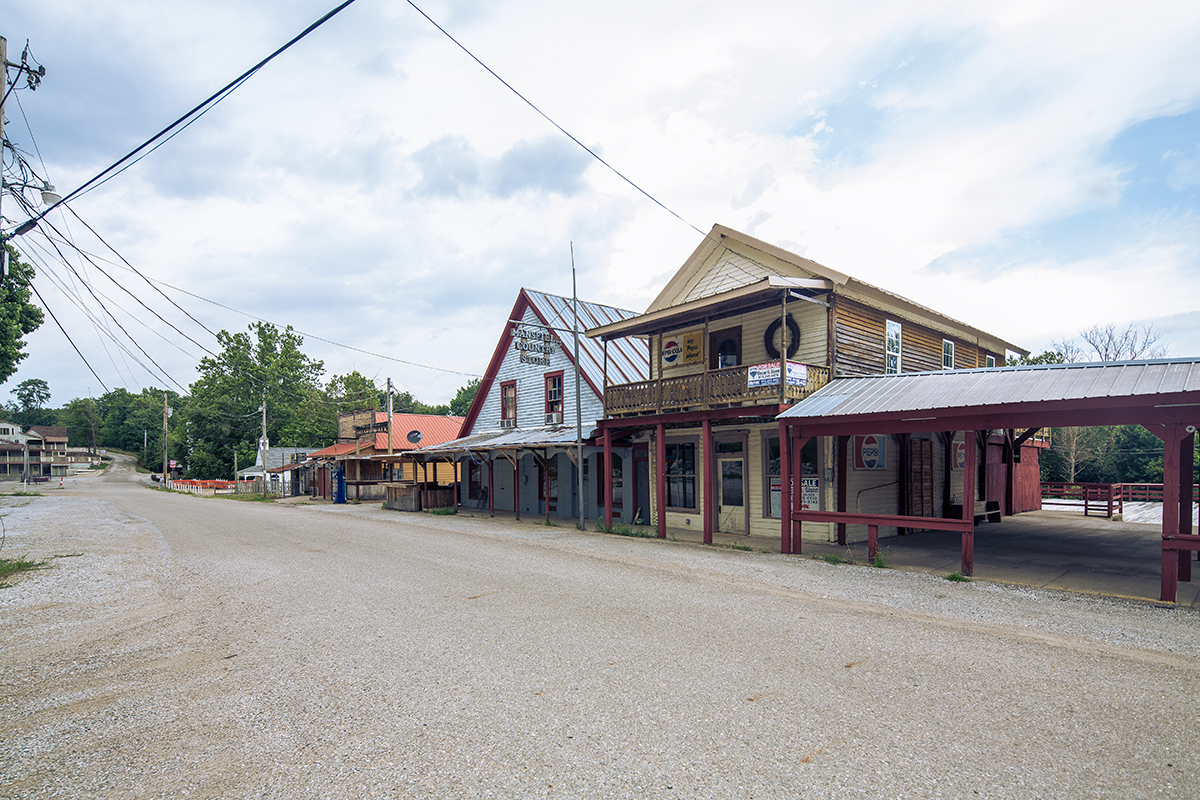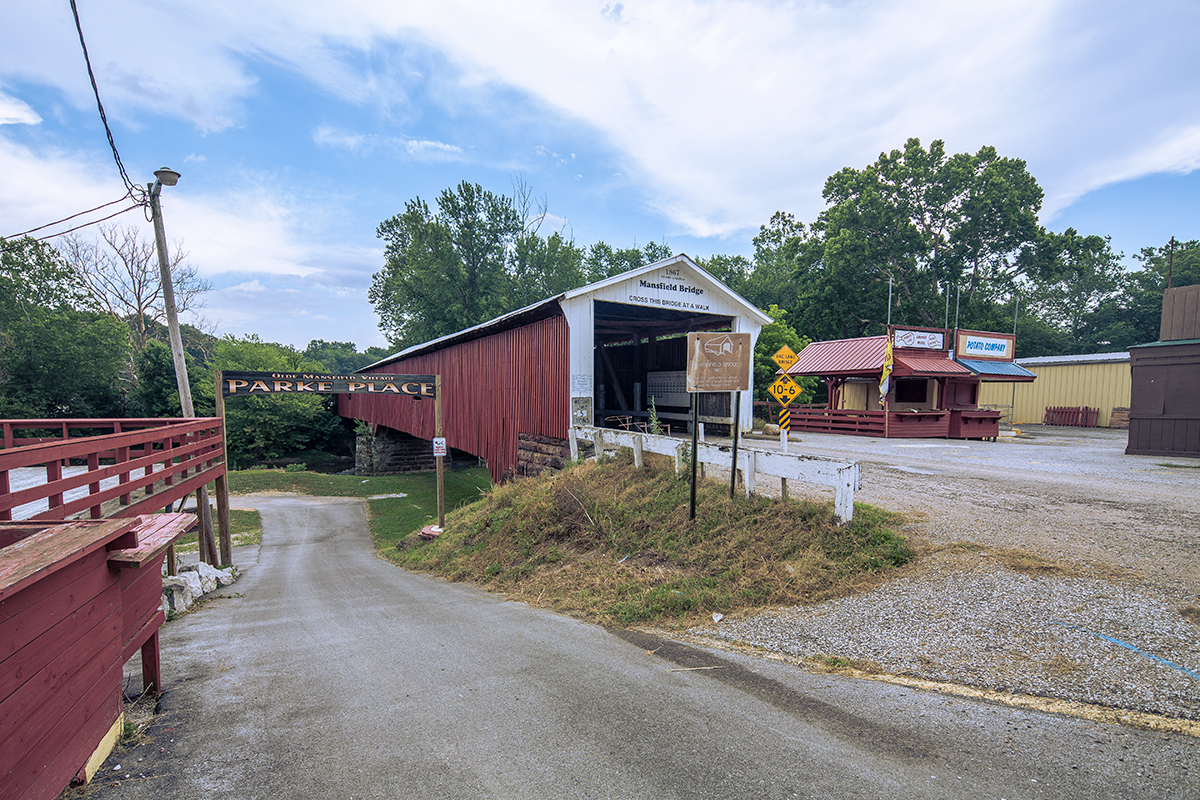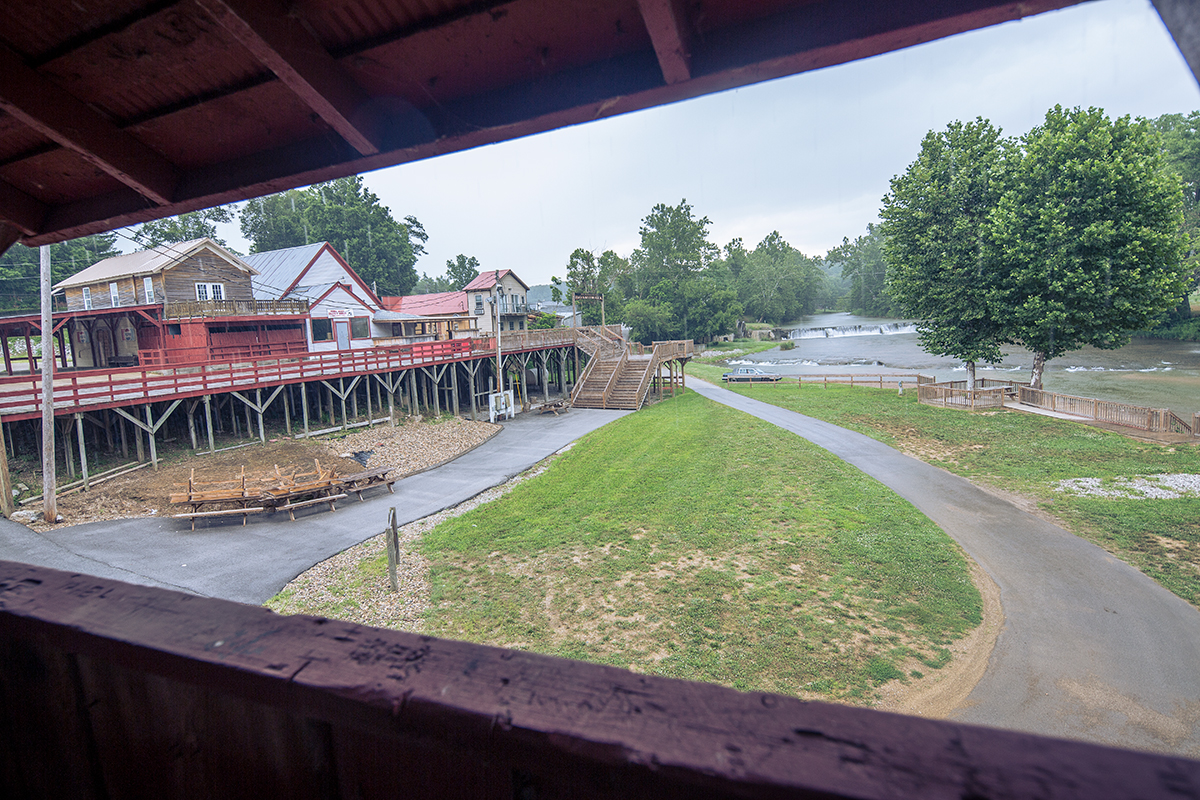Parke County is known for its covered bridges, 31 to be exact. To celebrate their unique collection of covered bridges, Parke County hosts a county-wide Covered Bridge Festival each year, always starting on the second Friday in October. This year, the festival will take place from October 12 through October 22 and features craft vendors, food, and historic tours. The festival is a must of anyone this fall who loves being outdoors when the leaves change! There are so many unique places to explore, it's hard to get them all in during one visit.
Nestled along the Big Raccoon Creek, just south of the Raccoon State Recreation Area, sits the village of Mansfield. As with many other Parke County communities, Mansfield boasts a covered bridge (the Mansfield Covered Bridge), village shops, and the historic Mansfield Roller Mill.
 New Dublin, Dickson's Mills, Strain's Mills
New Dublin, Dickson's Mills, Strain's Mills
Mansfield should win an award for having the most names throughout its history! When it was first platted, Mansfield was known as New Dublin, then Dickson Mills, followed by Strains Mills. In the 1850s, the name was changed again to Mansfield Mills. At one point, a developer considered changing the name again to Frontier City!
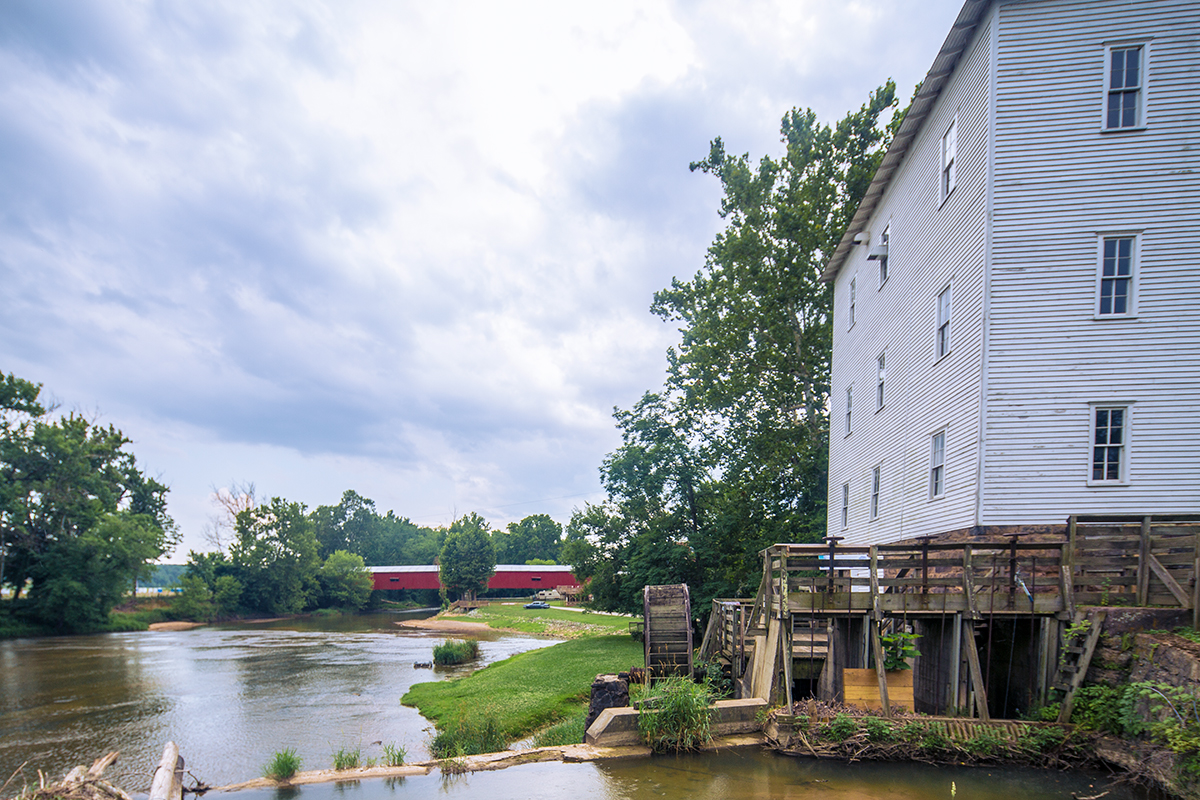 The Mansfield Roller Mill with the historic covered bridge in the background.
The Mansfield Roller Mill with the historic covered bridge in the background.
Arguably, the two most interesting and iconic structures in the village are the mill and covered bridge. The historic Mansfield Roller Mill was built in 1820 by James Kelsey and Francis Dickson as a grist mill. Grist, or flour mills, harnessed the power of flowing water to grind corn or wheat into flour. Specifically, Kelsey and Dickson channeled water from the Big Raccoon Creek Dam through a race to turn a water wheel, which turned the grist wheels (or rollers) to crush cereal crops into flour. Supposedly, the original wheels were made from stones deposited by the retreating glaciers, unearthed by nearby farmers as Parke County was being settled.
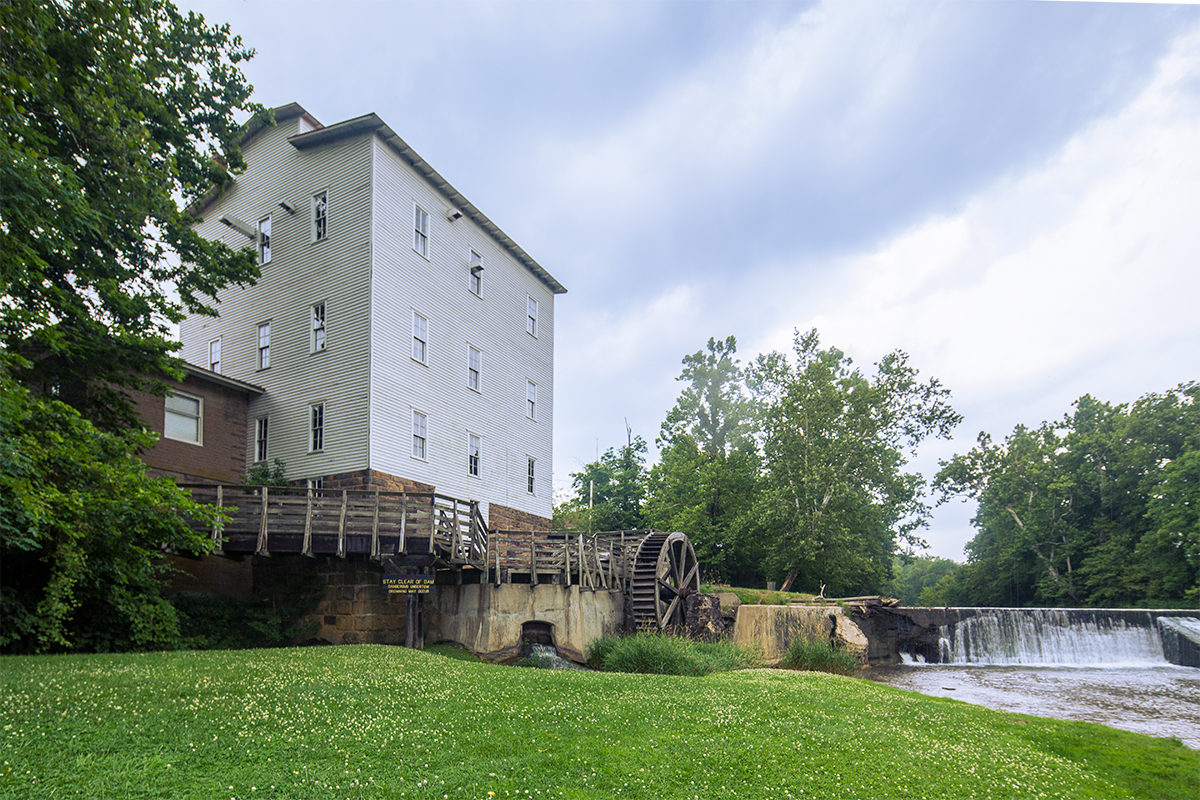 The Historic Mansfield Roller Mill
The Historic Mansfield Roller Mill
The mill is open only a few times of year, including the Mansfield Village Mushroom Festival, the Mansfield Village Beans and Cornbread Day, and the Parke County Covered Bridge Festival. However, visitors can still take in the historic site at any time of year. The mill was placed on the National Register of Historic Places in 1990.
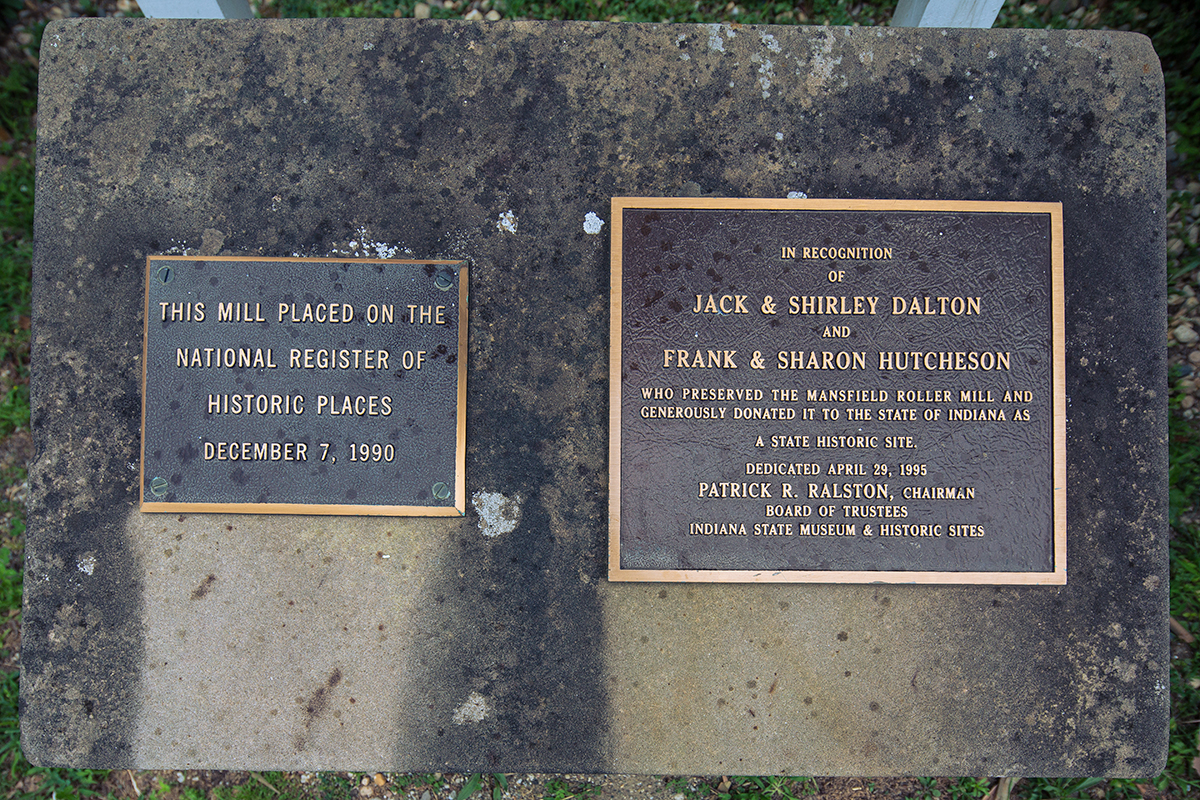 Placed on the National Register of Historic Places in 1990.
Placed on the National Register of Historic Places in 1990.
The mill was purchased by the American B-movie actor Edward "Tex" Terry in the 1970s. Terry hoped to turn the mill and the village of Mansfield into a working frontier town. The effort failed and he sold the mill. By the 1990s, the Dalton and Hutcheson families donated the mill to the Indiana DNR.
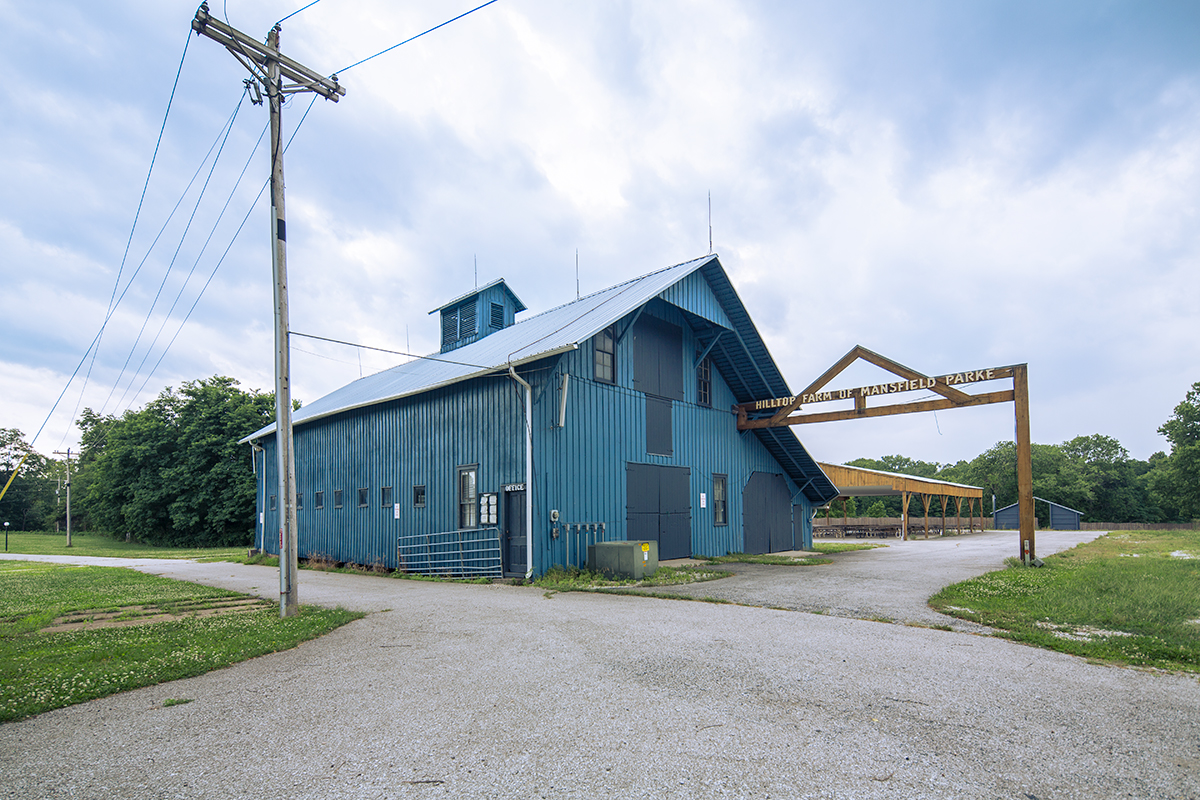 Mansfield Parke - Hilltop Farm
Mansfield Parke - Hilltop Farm
The village of Mansfield also hosts Saturday craft sales during the summer on the second and third Saturdays in June, July, and August. The entire village comes alive with craft shops, food vendors, and antique shops during the Parke County Covered Bridge Festival.
Visitors can also visit the nearby Mansfield Covered Bridge. Parke County's longest covered bridge at 279 feet, the MCB was originally built in 1867 by Joseph Daniels as a double burr arch double span truss bridge over the Big Raccoon Creek.
The bridge was added to the National Register of Historic Places in 1978 and received some much needed repairs in the 1980s. Today, cars are allowed across the bridge, but in the view of this author, a leisurely stroll is a better way to take in the site.
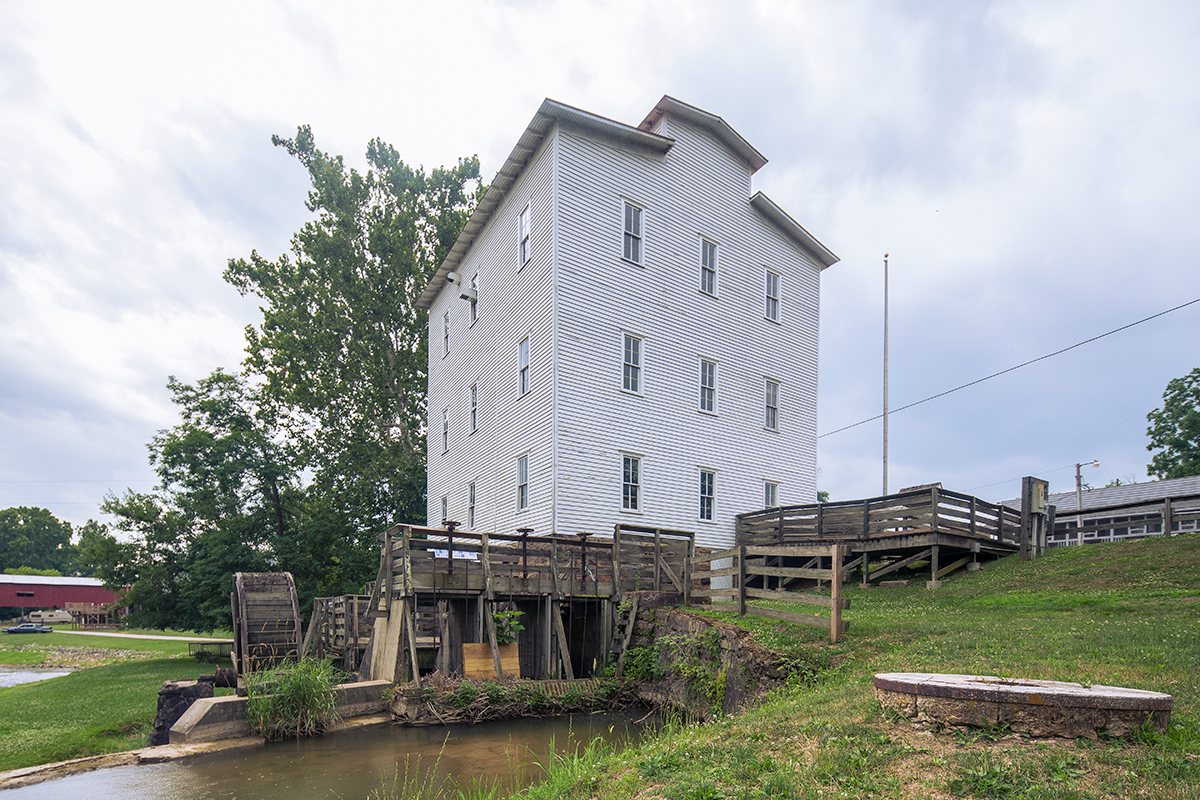 The Historic Mansfield Roller Mill
The Historic Mansfield Roller Mill
Make sure to add the Parke County Covered Bridge festival to your travel plans this fall. A stop through Mansfield at any time of year is also a must for history buffs, bridge enthusiasts, and Hoosiers wanted to know a little more about their own history.

